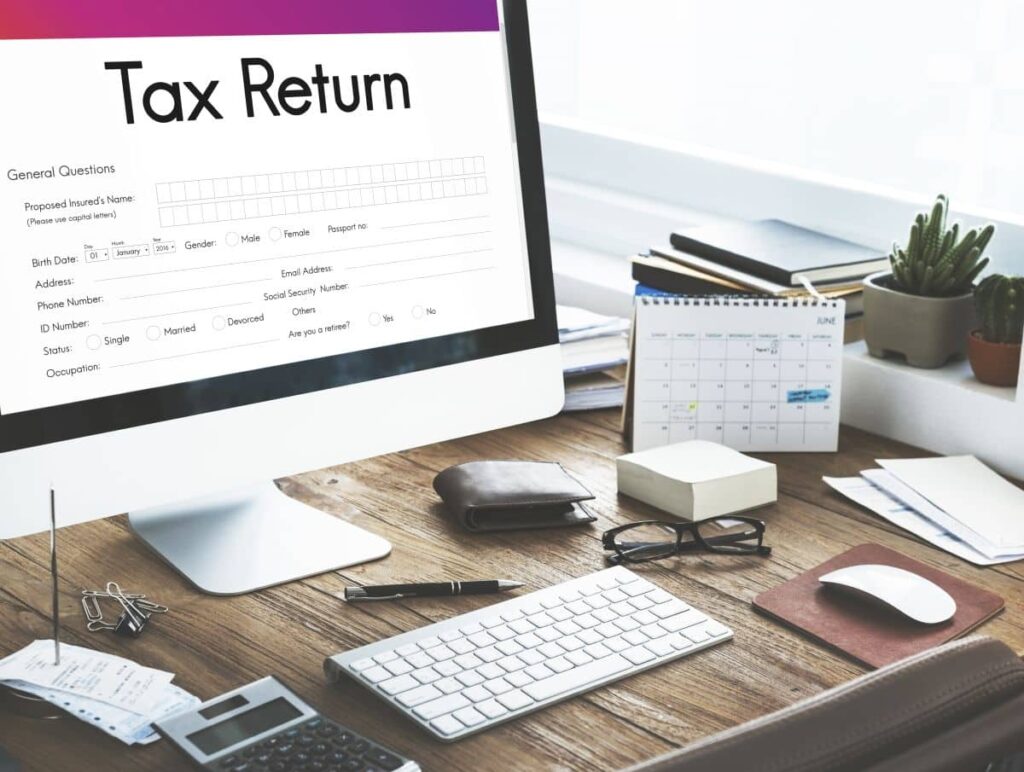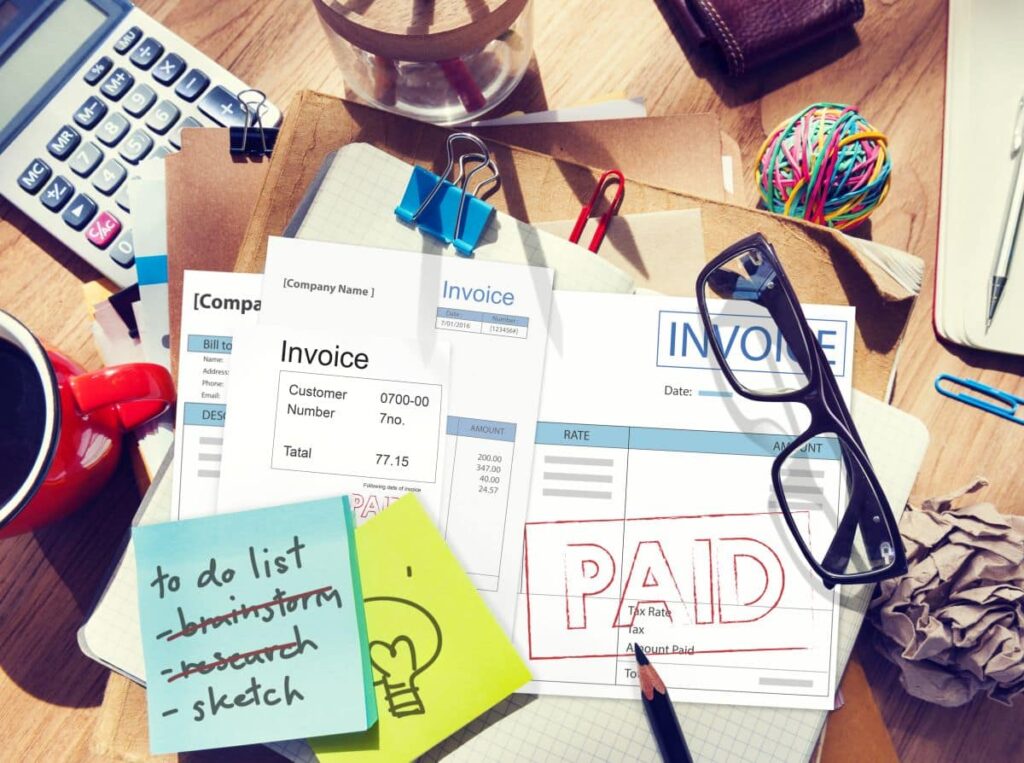Filing taxes can always be a challenge, and for many people, it's often confusing and intimidating. But with a little bit of knowledge and careful planning, you can find ways to reduce your tax bill in Australia! Sure, it takes some work to do, but the rewards are well worth the effort.
In this blog post, we'll share with you a few tips on how to maximise deductions and take advantage of other methods to save money at tax time so that you can keep more of what's yours.
Read on to learn all about cutting down your gross income, reducing taxable income through gifting or donations, taking note of special circumstances such as health care costs or fringe benefits like company cars – plus more!
Let's get started!
1. Employ The Appropriate Organisational Structure
When launching a brand-new company, you must consider the corporate structure that will best serve your long-term objectives and the kind of company you intend to operate. The regulations for taxes, asset protection, and set-up charges vary depending on the type of corporate structure chosen.
In Australia, the most frequent types of organisational forms for businesses are sole proprietorships, partnerships, companies, and trusts.
The owners of businesses need to have a solid understanding of the obligations associated with every structure, as the structure they choose will affect the amount of tax they are required to pay, the level of asset protection they enjoy, and the continuous expenditures they incur. By reviewing your existing business structure, you may determine whether or not it is still suitable for your company's current circumstances.
Thus, the first step in figuring out how to decrease taxes is to select the kind of company structure that satisfies your objectives and priorities in the most comprehensive manner possible. In Australia, there are four basic corporate structures, and the following is a list of the tax implications associated with each one:
Sole trader
You are required to pay taxes on your company's profits and any other income at the highest marginal tax rate that applies to individuals. So be aware that your tax rate might be as high as 45% (plus the Medicare levy) if you have a very high income.
Partnership
A partnership generally comprises multiple individuals working together to run a firm. In addition to paying taxes on their individual earnings for the year, every member in the partnership is responsible for paying taxes based on their proportionate share of the partnership's earnings. However, there is no tax liability for the partnership itself.
Company
The tax rate for companies is 30% or 25% for organisations subject to the base rate. However, unlike other company structures, corporations do not have a tax-free threshold; instead, every dollar of income is subject to taxation.
Trust
On their individual tax returns, every recipient must disclose the portion of trust income attributable to them. The trustee can disperse trust income in a manner that minimises the trust's overall tax liability, which often means giving it to recipients with the lowest marginal tax rates. The trust is exempt from paying taxes in and of itself.
2. Make Use Of All Tax Deductions
Suppose you are interested in lowering your taxable income but need help figuring out how to do so. In that case, Australia has several tax deductions for businesses that can assist you. For instance, you might be eligible to claim tax breaks for the following:
- business travel costs
- the acquisition of necessary pieces of apparatus
- assets going down in value over time
You can claim for the corporate portion of products utilised for personal reasons, like laptops, mobile phones, and automobiles. If this is the case, you can claim the corporate share of those items.
For instance, if you use your phone for work 50% of the time and personal use 50% of the time, you can only deduct half of your phone's cost from your company expenses.
Claim a tax offset
You can reduce the amount of tax you owe by claiming a tax offset of $1,000 if you are the sole proprietor, partner, or trust beneficiary of a small firm with an annual turnover of less than $5 million.
3. Write Off Bad Debts
If a creditor or client owes you money, and they do not pay you, and that cash might have contributed to your earnings, you may be eligible to take a deduction for the earnings you would not be capable of collecting (bad debt).
Suppose a company has registered for GST on an accrual basis. In that case, they are eligible to earn a GST credit on their subsequent BAS as well as a tax deduction for writing down bad debts, providing the following conditions are met:
- The company has done everything in its power to collect the debt, but after exhausting all of its options, it now has no reasonable hope of being paid back for the loan.
- Before the conclusion of the fiscal year, the accounting records are updated to reflect that the bad debt has been formally written off.
- Your unpaid debt is counted towards your assessable income for either the current or the previous fiscal year, depending on when it was incurred.
4. Share Your Earnings With Your Family Members
If your company is structured as a trust, the income that its recipients receive from it is subject to taxation. However, the trustee has discretion over how the trust's income is dispersed. If the recipients are members of the same family, this may end up making sense to give the most income to those who have the lowest marginal tax rate. Furthermore, if the trust distributions are the sole source of money for those recipients, their tax liability for those profits may even be relatively low.
5. Boost Retirement Savings Contributions

Contributing money to your retirement fund personally before it is taxed is still another approach to lower the amount of income that is subject to taxation (contribution caps apply).
Suppose you are capable of contributing a personal contribution to your retirement account on an annual basis. In that case, you may be eligible to claim a deduction for that amount on your taxes.
Note that you cannot deduct from your earnings that have already been taxed any payments to your super fund that were made by your boss and were done directly to your super fund.
In order to qualify for a tax deduction for personal payments to superannuation, your earnings must originate from one of the following sources:
- salary and wages;
- a personal business;
- investments;
- government pensions or allowances;
- a foreign source;
- trust distributions; or a partnership
Be mindful, though, that if you claim this as a tax-deductible expenditure, the superannuation fund will be responsible for paying the tax at a rate of 15% rather than the normal rate of 10%.
6. Delay Income Collection
Consider delaying the submission of your invoices until after the close of the current fiscal year if you are looking for ways to reduce your liabilities related to income-based taxes. After the 30th of June, any cash you gather will be applied to the following financial year.
7. Ensure Timely Payment of Employee Retirement Benefits
Only if all worker payments are made by the 30th of June may you claim a deduction for Superannuation Guarantee payments, required payments under industrial awards, and salary sacrifice contributions if you have workers. This deduction can only be claimed if you have staff members.
You should give some thought to submitting your contributions at least one full week prior to the deadline for filing your taxes in order to give yourself time for any processing delays or other bureaucratic glitches that may arise.
8. Account For Asset Depreciation
It's possible that your company can deduct some of its assets from your taxes if they become worth less over time. For instance, depreciation deductions for work vehicles and machinery can be available to you under certain circumstances.
9. Contribute To Your Superannuation In A Tax-Effective Manner
If you are self-employed, you might well be able to lower your total tax liability and improve your capacity to prepare for financial stability in retirement by making contributions to your superannuation fund out of the income you get before taxes are withheld.
Instead of being taxed at the higher marginal rate, contributions to a superannuation account that were made concessionally (that is, before taxes were withheld) are subject to a 15 per cent tax (which can be as high as 49 per cent).
Salary sacrifice and personal deductible contributions are two examples of the several kinds of concessional contributions that people are able to make. The act of getting into an arrangement with your workplace to have a portion of your pre-tax pay sent straight to your super fund can be referred to as "salary sacrificing." A salary sacrificed amount does not result in taxable revenue for the employee.
You are eligible to make contributions to your retirement fund and claim the full tax deduction if you are self-employed, largely self-employed, or a person who does not receive financial assistance.
10. Consider Capital Gains Tax (CGT)
If you sell some shares or assets that you have owned for less than a year, you will be subject to a higher rate of capital gains tax as part of your overall income tax liability. However, if you keep them for more than a year, you'll be eligible for a CGT discount of 50 per cent.
This means that you'll only have to pay tax on 50 per cent of the net capital gain that you make from selling that item. (It is important to note that the CGT doesn't relate to assets subject to depreciation, like commercial equipment.)
11. Offset Income With Negative Gearing
If you possess a rental property as an individual and the costs of maintaining it are more than the profits it generates, you are eligible to deduct those costs from your taxable income.
In addition, if you anticipate incurring a loss on the rental property you own during the current fiscal year, you may be eligible to submit an application for a PAYG withholding variation, which may result in a reduction of the amount of tax withheld at various points during the year.
12. Donate to Nonprofit Organisations
Donating to charitable organisations is yet another method for lowering one's tax burden. If you provide charity contributions of property or cash and have a receipt for your contribution, you are likely eligible to claim those costs as deductions from your taxable income.
Donating to a DRG organisation is one approach to lower the amount of your income that is subject to taxation. A DRG, also known as a deductible gift recipient, is an organisation or fund that the ATO recognises as capable of receiving tax-deductible donations.
Based on the kind of donation you made, you may be eligible for a tax deduction as follows:
- Cash: the donation or present is valued at more than two dollars, and you have maintained a record of it;
- See the Australian Taxation Office for the specific guidelines that apply to the donation of property or shares; and
- Donations given in the name of the Heritage and Cultural programmes: check out the specific conditions under which donations are tax-deductible.
13. Buy Private Health Insurance
If you make an annual salary of more than $90,000 and do not have health insurance, the Australian Taxation Office (ATO) will assess a Medicare surcharge of between 1% and 1.5% of your total income. If you have private health insurance, you should not be concerned about being exposed to this fee (the cost could be much less than the Medicare levy).
A private health insurance rebate was created by the Australian Taxation Office (ATO) as an incentive for taxpayers with middle- to high incomes to minimise their reliance on the public health system and to help the private health sector become more self-sufficient.
The following are some of the requirements to meet in order to qualify for the tax offset:
- having the citizenship of Australia;
- generating a taxable income that is less than $80,000 for a household of four or $140,000 for a single person;
- owning a health insurance policy that satisfies the requirements; and
- possessing a valid Medicare card
In addition to this, if you do not have private health insurance and have an annual income of more than $90,000 (singles) or $180,000 (families), you will be required to pay a Medicare Levy Surcharge that is at least 1%. This is on top of the mandatory 2.0% Medicare levy that the majority of taxpayers are required to pay.
Therefore, in order to avoid the 1% surcharge and take advantage of the tax refund, you should investigate the possibility of purchasing private healthcare insurance.
You can submit your request for the health insurance rebate in one of two ways:
- a reduction in the cost of your monthly premium; or
- you can make a claim on your tax return.
We recommend that you claim it through your tax return if you are searching for strategies to lower the amount of income subject to taxation.
14. Maintain Correct Financial Records
The majority of the options for reducing taxes that we have discussed in this article need tax receipts or other documents to be kept. If you keep your records on paper, you might want to think about scanning them and keeping the digital versions on the cloud so that you can simply arrange and retrieve the information. Note that the Australian Taxation Office mandates that you preserve records for a period of 5 years, starting from the date that you submit your tax return.
15. Utilise Accounting Software
As a company owner, keeping track of your spending and every potential tax deduction can take a lot of work. However, if you utilise accounting software, all of your essential financial data will be recorded in a single location. Additionally, you can utilise your software to handle taxes and basic reports, keep track of GST, and submit BAS.
16. Depreciation Claims Can Be Made On Property
The vast majority of properties that bring in revenue are eligible for depreciation on some level or another. Investors in real estate are eligible to claim the capital works deduction (Division 43) and the plant and machinery depreciation deduction (Division 40).
Renovating a home qualifies for the capital works deduction, which applies to goods permanently attached to a property's structure. The plant and machinery deduction refers to the amount that you are permitted to claim for certain things that are located inside the property. These items include window coverings and blinds.
17. Your Home Should Be Negatively Geared
The process of creating tax losses through the use of tax-deductible expenses in an amount that is greater than the investment income is known as negative gearing. When a property owner has costs that are tax deductible that is greater than the annual rental income from the property, the owner is eligible to use the net rental loss to lower the amount of income that is subject to taxation.
18. Franking Credits
Franking credits are a type of tax credit that enable Australian corporations to transfer to shareholders the amount of tax that was paid at the business level.
Franking credits have the ability to either reduce the amount of income tax that must be paid on dividends or be obtained as a tax refund.
When a business pays out fully franked dividends to shareholders (and those dividends are considered part of the taxpayer's taxable income), the shareholder is eligible to receive a credit against their own taxable income equal to the amount of tax that has been already paid by the business from which the dividend was received.
19. The Retirement Exemption
The timing of the sale of assets with significant capital gains that are held outside of a small company owner's retirement account should be considered in order to minimise the amount of capital gains tax incurred.
The capital gains exempt status on the sale of an active company asset is capped at $500,000 for an individual's lifetime. In addition, for individuals who have yet to reach the age of 55, the profits from the sale of the asset are required to be deposited into a retirement savings account or a superannuation fund.
If you have owned the asset for more than a year, you are eligible for a fifty per cent CGT discount.
20. Make a Binding Death Benefit Nomination
Your retirement benefits will not be included in your will. However, if you do not make a nomination before your death, the trustee of your super fund will decide which of your dependents will be entitled to receive your super benefits.
The term "Binding Death Benefit Nomination" (BDBN) refers to a formal nomination that you submit to your super fund in order to appoint your dependents as recipients in the event of your passing.
In most cases, a BDBN will become invalid after three years, which is why it is essential to update it regularly.

21. Make a Plan To Evade The So-Called "Death Tax"
The dependents of a deceased member are exempt from paying taxes on the super death benefits.
Nevertheless, several more members do not leave behind any dependents and those who do often leave behind grown children who are self-sufficient and don't qualify for tax-free superannuation benefits. This is because the taxable portion of the lump-sum super death payment is typically subject to a tax rate of 15%, in addition to Medicare and any other applicable levies.
Members ought to think about making use of a recontribution plan, maintaining a distinct pension, or even drawing down on their superannuation before they pass away in order to cut down on the likelihood of their surviving adult offspring having to pay the "death tax."
22. Managing the Estate of a Deceased Person
As the executor of an estate that belongs to a deceased person, you are responsible for fulfilling a number of special tax duties, including the following:
- You are required to inform the ATO that you have been appointed as executor.
- The final return for lodging as well as any trust tax returns
- Give the recipients the data they need to report their share of the distribution on their own tax returns.
- Taxation of the income of a deceased person's estate
23. Utilise A Testamentary Trust
After a person's death, testamentary trusts make it possible to distribute their income tax efficiently. Testamentary trusts are established inside and by a person's will but do not become active until after the person has passed away.
Any taxable income produced by a testamentary trust is either retained by the trust itself or distributed to the recipients in a way that minimises the recipients' tax liability.
On the amount of income they obtain from the trust, recipients are subject to taxation at their own personal marginal rates. On the other hand, recipients under the age of 18 are subject to taxation at the standard adult rate rather than the tax rate that applies to penalties for minors. When it comes to taxes, this is where the opportunity for savings might be quite significant.
24. Make Arrangements For Your Funeral
If funeral costs are paid in advance or money is invested in a funeral bond, the taxpayer may be eligible for large tax savings in the future.
Bonds with a face value of up to $12 000 are regarded as "exempt assets" for the purpose of the age pension means test administered by Centrelink and the Department of Veterans' Affairs.
To qualify for the tax benefits of funeral bonds, the total amount invested must be spent on "reasonable" costs associated with the funeral.
When folks prepay for their funerals, they can be extremely particular about what they desire and can also pay at the prices that are in effect today.
Key Takeaways
You might be in the perfect situation to save cash on an annual basis by equipping yourself with information on how to lower taxable income and by engaging in efficient tax preparation.
When arranging your individual tax return, though, there is no single technique that applies to all situations.
In accordance with the Australian Taxation Office, a tax agent is used to file 74% of tax returns in Australia. Therefore, in most situations, receiving preliminary guidance will not only help you save time, but they'll also be capable of pointing you towards strategies that can lower your taxable income.
Frequently Asked Questions
- Claim deductible expenses. ...
- Donate to charity. ...
- Create a mortgage offset account. ...
- Delay receiving income. ...
- Hold investments in a discretionary family trust. ...
- Pre-pay expenses. ...
- Invest in an investment bond. ...
- Review your income package.
- Claim Your Work-from-Home Expenses.
- Claim Other Work-Related Expenses.
- Get Your Donation Back.
- Get Extra Refund for Your Side Hustle.
- Claim Refund on Self-Education.














